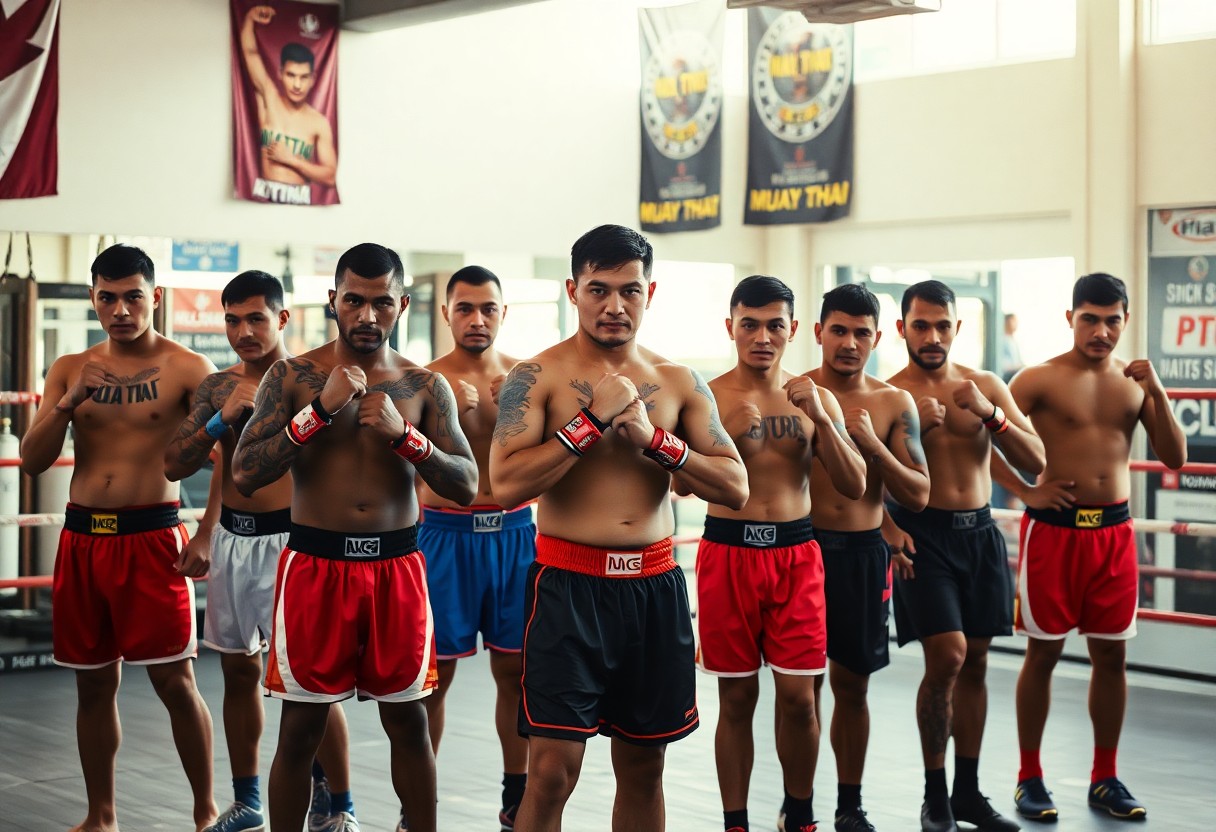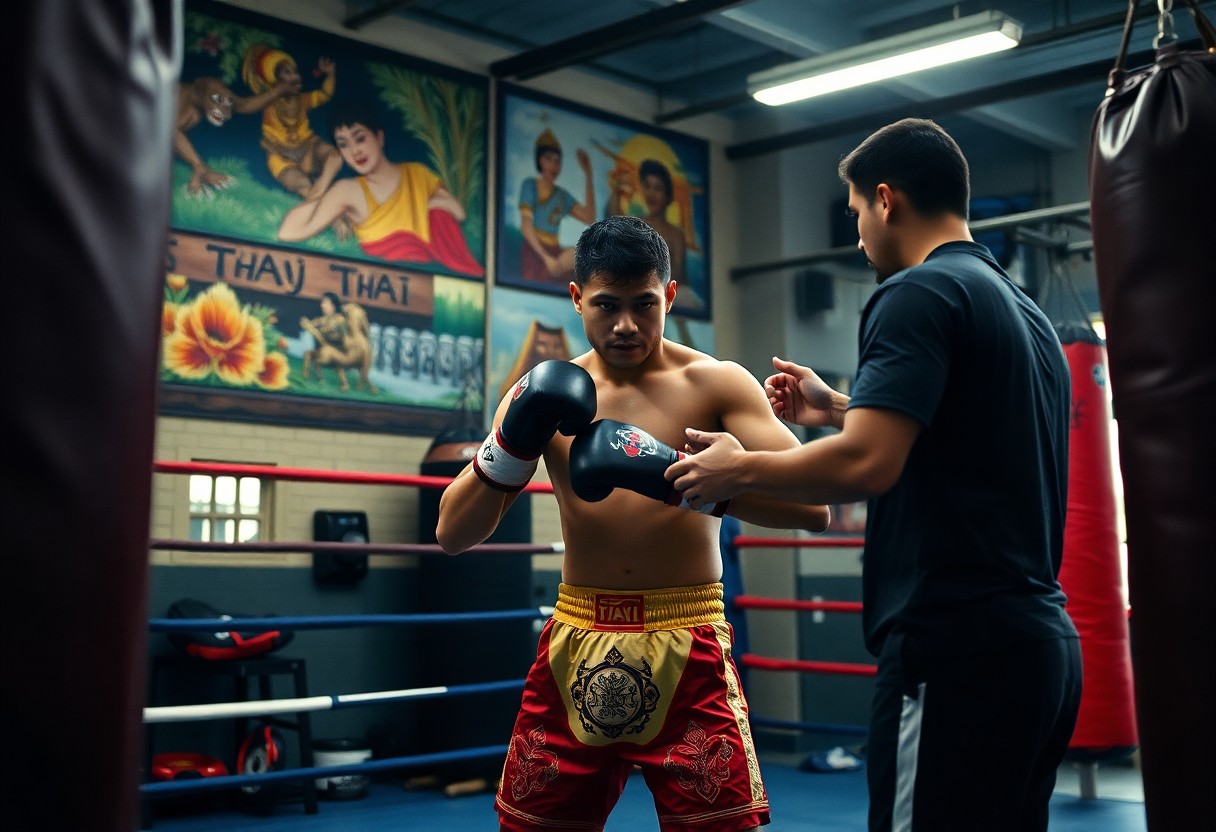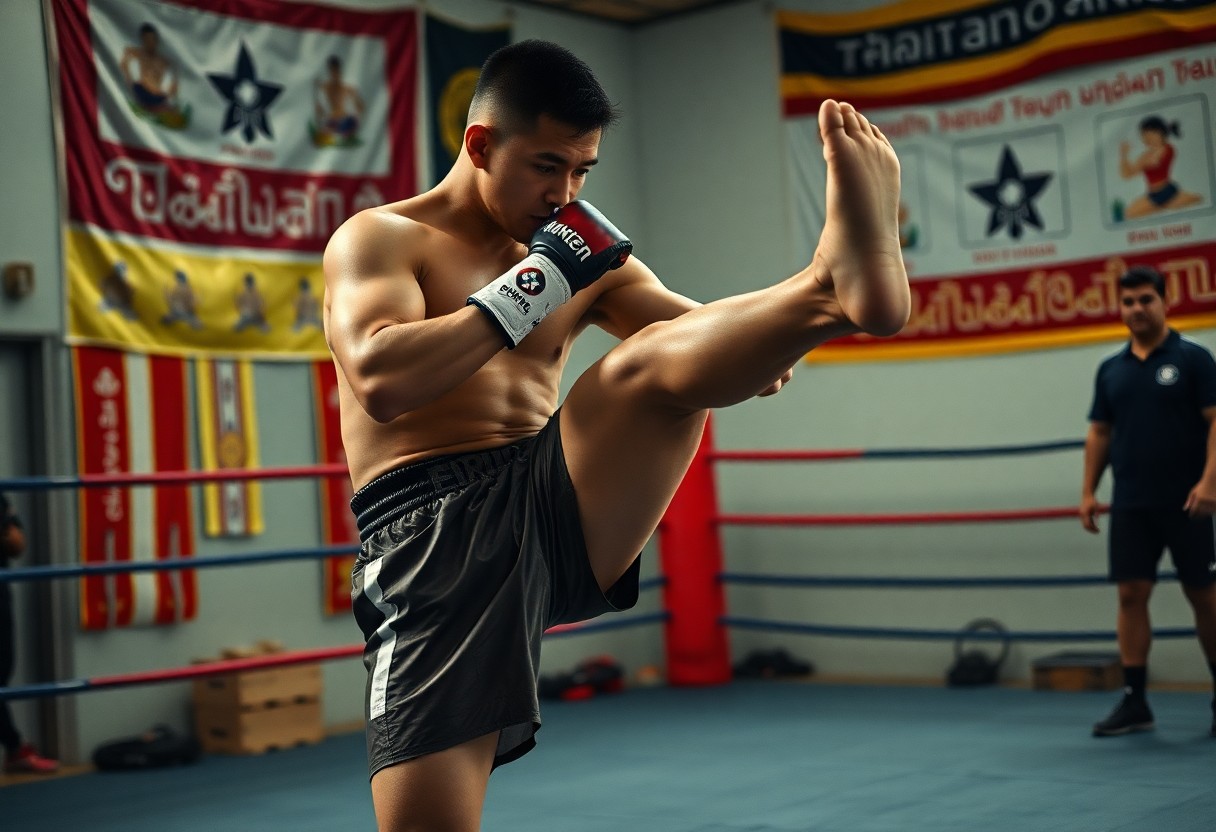
With Muay Thai’s intense nature, preparing for a fight demands both your mind and body to be in peak condition. You must focus on building explosive strength, enhancing your endurance, and mastering precise techniques to stay competitive. Additionally, developing a resilient mindset will help you face the physical challenges and unpredictable moments inside the ring. Your training should balance rigorous physical drills with mental strategies, such as visualization and stress management, ensuring you enter the fight confident and ready to perform at your best.
Building a Strong Foundation: Physical Conditioning
Physical conditioning forms the backbone of your Muay Thai readiness, blending endurance, strength, and explosiveness. By focusing on these key areas, you prepare your body to absorb and deliver powerful strikes throughout multiple rounds. Maintaining a regimen that balances stamina with muscular resilience builds the capacity to sustain high-intensity efforts without compromising technique or speed, thus significantly enhancing your performance in the ring.
Developing Aerobic Endurance
Running 3 to 5 miles, incorporating interval sprints, and engaging in continuous bag work help elevate your aerobic capacity. Aim for long, steady-state cardio sessions to boost overall stamina, and combine these with 30-second to 1-minute high-intensity intervals to simulate fight conditions. Tracking your heart rate during workouts ensures training stays within the ideal zone to maximize oxygen delivery and delay fatigue.
Targeting Muscular Strength and Power
Weighted squats, deadlifts, and explosive plyometrics like jump squats are necessary for developing the force behind your kicks and clinch work. Integrate resistance training 3 times per week, employing compound movements and rotational core exercises to mimic Muay Thai’s dynamic actions. Gradually increasing load and focusing on speed during lifts enhance both strength and functional power specific to striking.
Adding Olympic lifts such as power cleans and snatches can elevate your ability to generate peak force rapidly, which translates directly into more impactful strikes. Supplement these exercises with medicine ball throws and kettlebell swings to improve hip explosiveness and rotational strength. Employing a periodized training approach balances volume and intensity, reducing injury risk while progressively building power to ensure your strikes deliver maximum impact during the fight.
Mastering Technique: Skill Development
Developing your Muay Thai skills hinges on dedicated repetition and live sparring. Perfecting your stance and fluid transitions between strikes enhance both your offense and defense, ensuring you strike with maximum efficiency. Prioritize drilling combinations that reflect fight scenarios, gradually increasing speed and power. Supplement your technical work with shadowboxing and pad sessions to simulate real-time adjustments, building instinctual responses that keep you adaptable in the ring.
Striking Fundamentals: Precision and Power
You sharpen your precision by targeting smaller, vulnerable points such as the chin, solar plexus, and ribs, enabling knockouts with fewer strikes. Developing power starts from hip rotation and weight transfer—techniques embodied in the Muay Thai roundhouse kick. Integrating bag work with correct form allows you to generate force while minimizing energy waste. Focus on controlled explosive hits that maintain balance, ensuring your strikes land hard without compromising your positioning.
Defensive Strategies: Anticipation and Reaction
Effective defense in Muay Thai combines reading your opponent’s cues and honing reflexes to anticipate attacks. Observing slight shifts in their guard and foot placement lets you predict moments to evade, block, or counter. Practicing reaction drills like slip-and-counter sequences embedded in sparring sessions enhances your ability to remain calm and responsive under pressure, transforming defense into a platform for offense.
Expanding on defensive strategies, you can analyze fighters like Saenchai, who exhibit uncanny fight IQ through subtle head movements and feints, breaking their opponent’s rhythm. Training with a variety of partners helps you recognize diverse attack patterns. Employing drills focused on timing, such as catching jabs and immediately countering, cements your anticipation skills. Conditioning your neuromuscular system with plyometric exercises sharpens your reaction speed, allowing you to maintain a split-second advantage that could determine the fight’s outcome.
The Mental Edge: Psychological Fortitude
Mastering Muay Thai requires sharpening your mental resilience alongside physical prowess. By consistently challenging your mind through scenario-based sparring and stress drills, you adapt to high-pressure situations more effectively. Training your brain to stay calm amid chaos amplifies timing and decision-making, giving you a decisive advantage in the ring. Mental toughness isn’t just about enduring pain but about maintaining strategic clarity when every move counts, allowing you to exploit openings while anticipating your opponent’s tactics with calculated precision.
Cultivating Focus through Visualization
Visualization techniques empower you to rehearse fights vividly, sharpening reflexes and strategy without physical strain. Envision each round, picturing precise strikes, defensive maneuvers, and continuous footwork to build neural pathways linked to your performance. This mental rehearsal mirrors real experiences, accelerating skill acquisition and boosting confidence through simulated success. Studies show athletes who visualize vivid fight scenarios can reduce reaction time by up to 20%, enhancing your split-second decision-making imperative in Muay Thai bouts.
Managing Anxiety and Building Confidence
Pre-fight nerves are natural, but controlling them transforms anxiety into focused energy. Deep breathing, progressive muscle relaxation, and positive affirmations build a mindset that channels adrenaline constructively. Tracking incremental progress in training fortifies your self-belief, making you mentally prepared to handle unexpected challenges in the ring. This mental preparedness allows your skills to surface under pressure, turning nervousness from a hindrance into a catalyst driving aggressive yet disciplined performance.
Delving deeper, integrating controlled breathing techniques such as box breathing (4 seconds inhale, 4 seconds hold, 4 seconds exhale, 4 seconds hold) can substantially reduce cortisol levels, calming your physiological response to stress before stepping into the ring. Coupling these with journaling your fight-day experiences helps identify anxiety triggers, enabling targeted mental conditioning. Confidence grows not just from physical readiness but from understanding your psychological patterns, fostering resilience to rebound swiftly from setbacks during a fight. This mind-body synergy becomes a cornerstone of championship-level mental fortitude.
Creating a Customized Training Plan
Developing a personalized training plan hinges on assessing your current fitness level, skillset, and fight timeline. Tailor your weekly schedule to progressively enhance strength, endurance, and technique while preventing overtraining. Integrate specific goals like improving clinch control or power strikes, then allocate appropriate focus areas each week. Adjust intensity and volume based on recovery feedback, ensuring consistency leads to peak performance on fight day.
Structuring Daily Training Sessions
Organize each session into warm-up, skill drills, conditioning, and cooldown segments. For instance, begin with dynamic stretches and jump rope for 10 minutes, followed by focused pad work or bag drills emphasizing combinations for 30–40 minutes, then conclude with high-intensity interval training or strength exercises. Dedicated cooldown routines with mobility work enhance joint health and flexibility, setting a solid foundation for the next session.
Balancing Sparring, Drills, and Recovery
Incorporate sparring 2 to 3 times weekly to refine timing and fight strategy, balancing it with technical drills on non-sparring days to sharpen precision without excessive fatigue. Prioritize scheduled rest and active recovery, such as light swimming or yoga, to promote muscle repair and mental clarity, preventing burnout.
Effective balance between sparring, drilling, and recovery significantly elevates your fight readiness. Excess sparring can cause accumulated microtraumas and mental exhaustion, detracting from performance gains. Conversely, insufficient live practice limits strategic adaptability in the ring. Structured drills build muscle memory, but overdoing technique work without sparring reduces tactical experience. Aim for smarter sparring sessions with focused objectives, supplemented by drills that address identified weaknesses. Integrate recovery modalities like massage and adequate sleep to maintain high training intensity over weeks, ensuring you enter the fight camp strong and sharp.
Nutrition: Fueling Performance for Fight Day
Your nutrition directly influences how effectively your body performs and recovers throughout fight training. Managing macronutrients to match your intense workouts enhances your stamina and muscle repair. Timing your meals for optimal digestion means you’ll enter the ring feeling energized rather than weighed down. Leveraging nutrient-dense foods rich in vitamins and minerals supports immune function, helping you stay healthy during rigorous training phases. Adjusting calorie intake to balance fat loss or muscle gain helps you maintain your target weight class without sacrificing strength or endurance.
Optimal Diet for Energy and Recovery
Focusing on balanced meals that combine complex carbohydrates like brown rice or sweet potatoes with lean proteins such as chicken breast and fish sparks sustained energy release and efficient muscle repair. Incorporate healthy fats from sources like avocados and nuts to support hormonal balance and joint health. Prioritizing antioxidant-rich fruits and vegetables reduces inflammation and speeds up recovery after brutal sparring sessions. Meal timing matters too; consuming protein and carbs within 30 minutes post-training maximizes glycogen replenishment and muscle rebuilding, setting you up for peak performance in subsequent workouts.
Hydration Strategies: Staying at Your Best
Proper hydration maintains your reaction time, focus, and endurance under pressure on fight day. Drinking water consistently throughout training combats the danger of even mild dehydration, which can decrease cognitive function by up to 20%. Electrolyte replacements, particularly sodium and potassium, prevent cramping during extended sessions that push your limits. You might find incorporating coconut water or specialized sports drinks helps you stay balanced without overloading on sugars. Monitoring urine color and bodyweight fluctuations before and after workouts offers practical indicators of your hydration status.
Beyond general fluid intake, customize your hydration strategy based on sweat rate and environmental conditions. Some fighters lose up to 3 liters of sweat per hour, necessitating tailored electrolyte replenishment plans to avoid hyponatremia or energy crashes. Drinking too much plain water without electrolytes dilutes blood sodium levels and impairs muscle function. Implement sipping small volumes frequently rather than gulping large amounts to enhance absorption. Tools like sweat patches or portable conductivity meters provide data on your individual sweat composition, letting you fine-tune intake for optimal in-ring performance.
Summing up
With this in mind, training for a Muay Thai fight demands both physical intensity and mental resilience. You must focus on building strength, endurance, and technique through disciplined workouts while sharpening your mindset to stay calm and confident. Balancing these aspects ensures you are well-prepared to face your opponent with skill and composure. By committing consistently to your training plan and mental conditioning, you empower yourself to perform at your best when it counts most.





